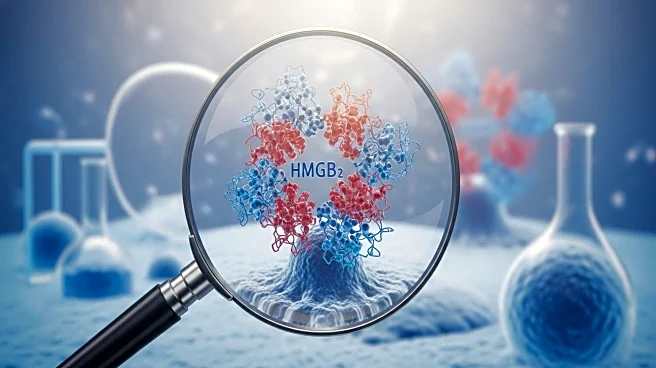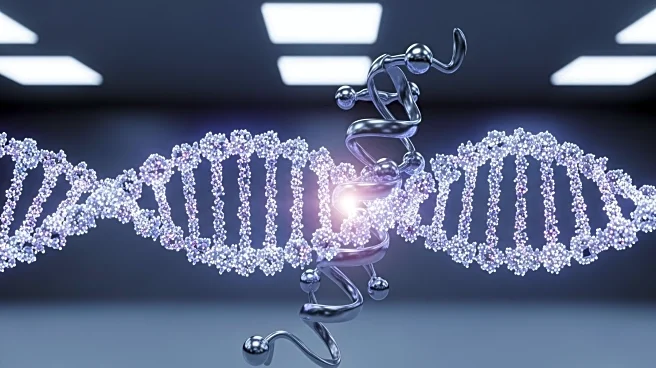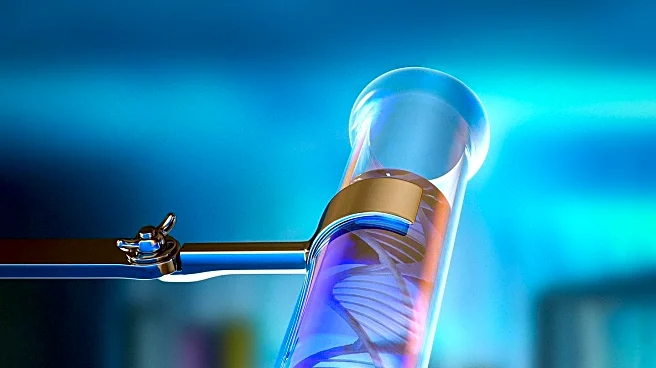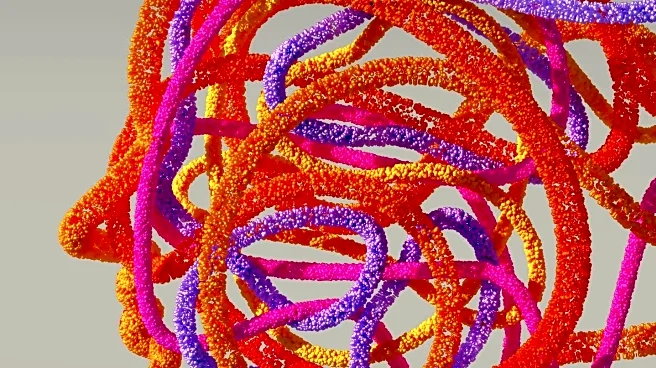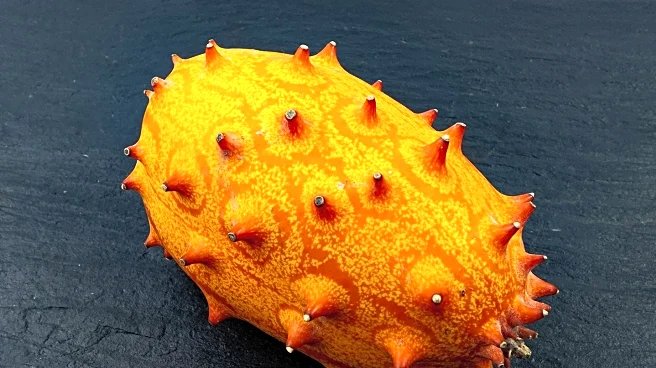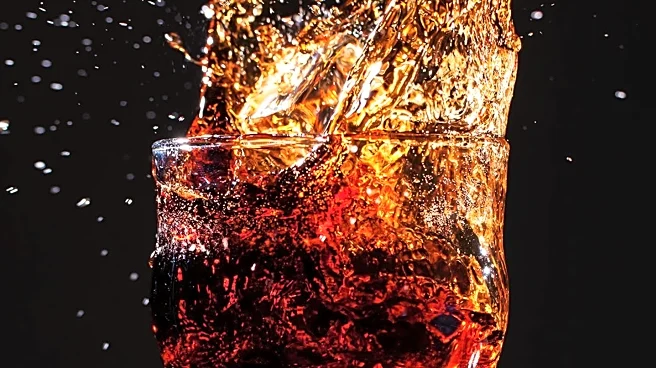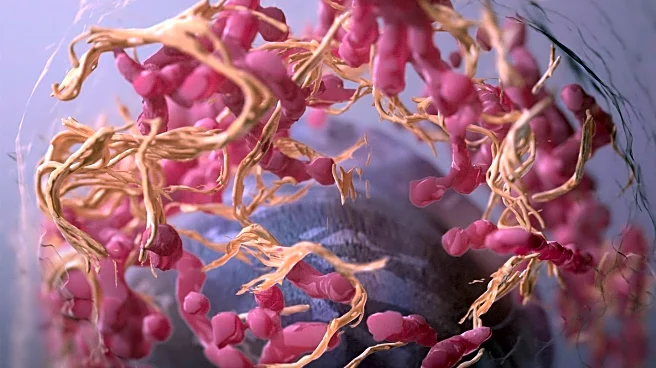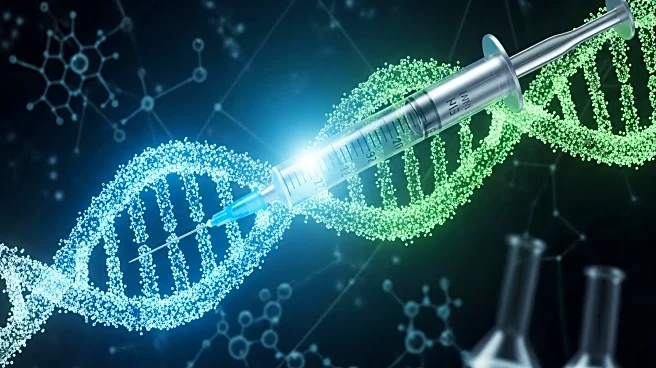What is the story about?
What's Happening?
Recent research led by the Ludwig Institute for Cancer Research has revealed that cancer cells become more invasive and drug-resistant when squeezed within tissues. This transformation is driven by the activation of a protein called HMGB2, which alters the packaging of genetic material, making regions linked to invasiveness more accessible for gene expression. The study, conducted using a zebrafish model of melanoma, demonstrates that mechanical stress within the tumor microenvironment can trigger epigenetic changes, leading to a switch from rapid cell division to a program of neuronal invasion. This discovery highlights the role of the tumor's physical environment in driving cancer's adaptability and poses challenges for treatment, as therapies targeting rapidly dividing cells may miss those that have transitioned to an invasive phenotype.
Why It's Important?
The findings underscore the complexity of cancer treatment, as they reveal how physical stress within the tumor microenvironment can drive epigenetic changes that enhance cancer cell invasiveness and drug resistance. This poses significant challenges for existing therapies, which may not effectively target cells that have adapted to become more invasive. Understanding the role of HMGB2 and the mechanical forces within the tumor environment could lead to the development of new therapeutic strategies aimed at preventing or reversing these invasive transformations. This research could have broad implications for improving cancer treatment outcomes and developing more effective therapies.
What's Next?
Future research may focus on identifying therapies that can target the factors involved in the invasive switch triggered by mechanical stress. By understanding the mechanisms behind HMGB2 activation and its role in cancer cell invasiveness, scientists hope to develop treatments that can prevent or reverse these changes. This could lead to more effective cancer therapies that address the adaptability of cancer cells within the tumor microenvironment.
AI Generated Content
Do you find this article useful?
